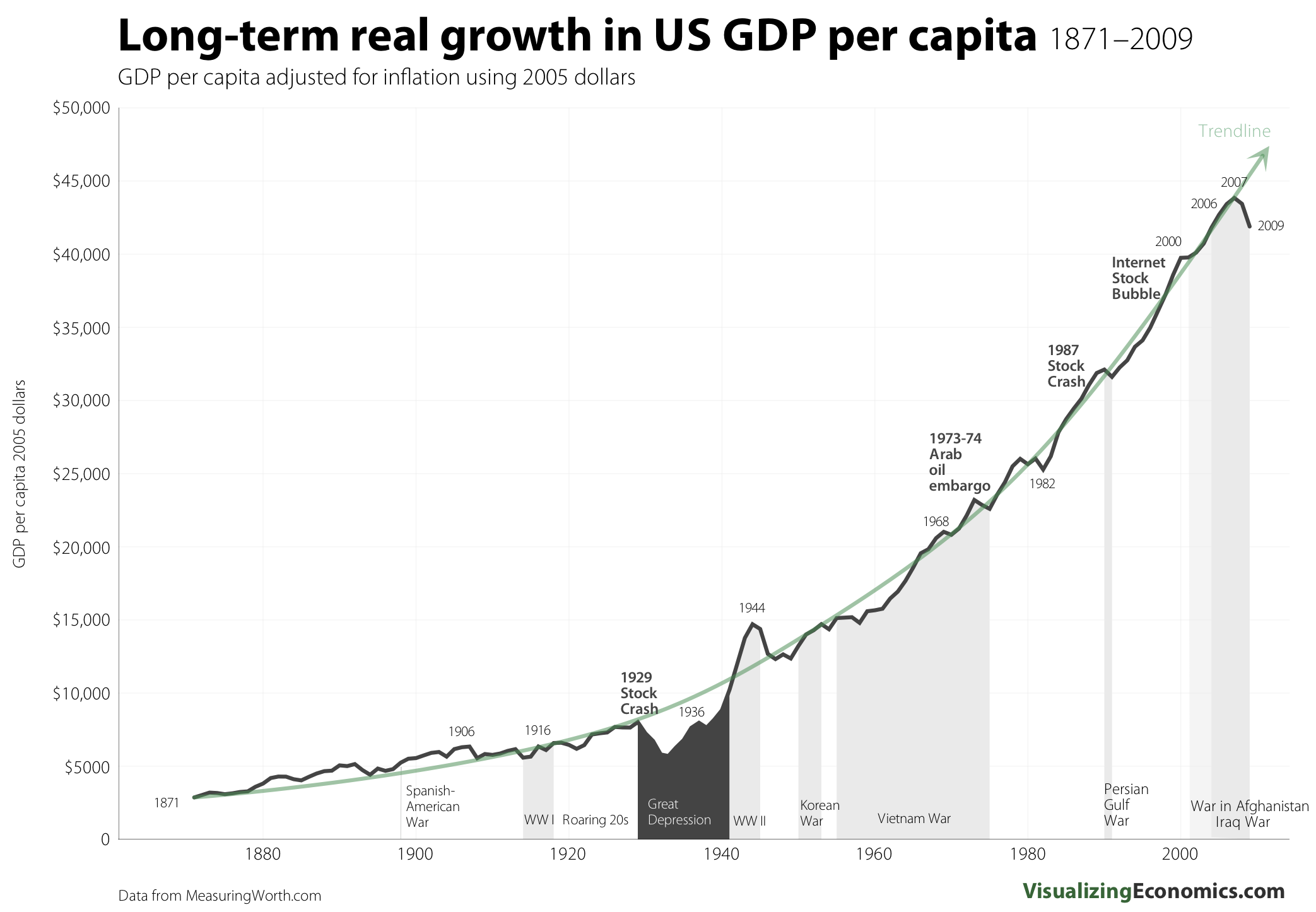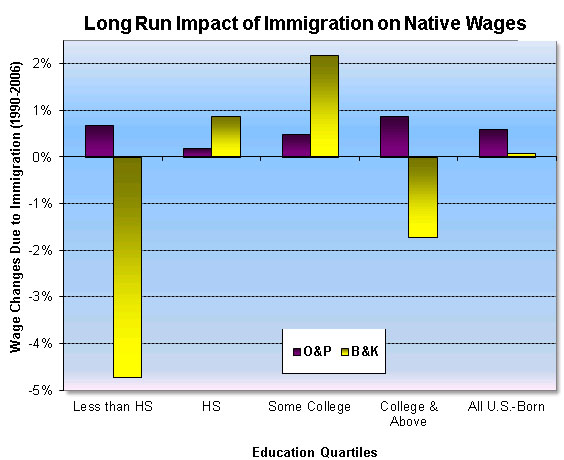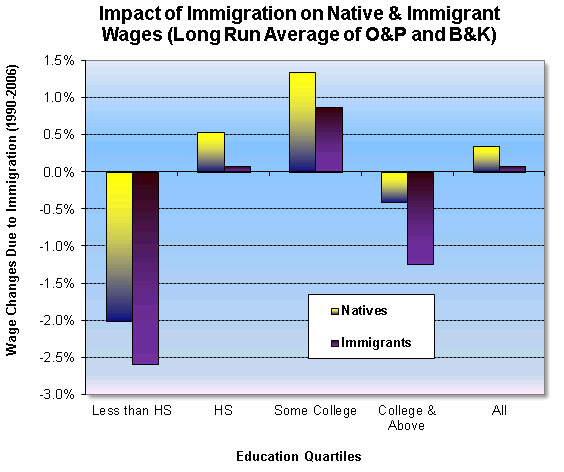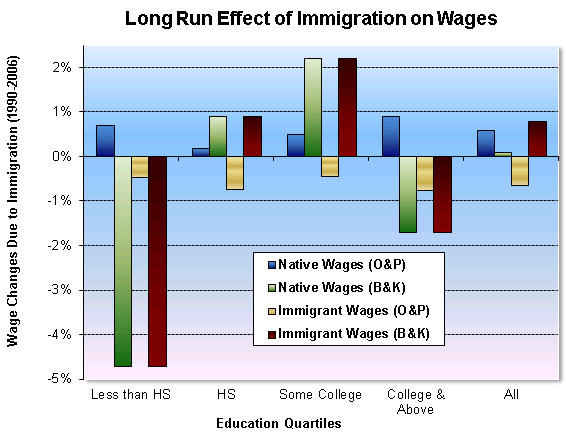Jim Manzi, the founder of Applied Predictive Technologies, last year published the book Uncontrolled, an excellent exposition of the view that business and government should rely on more randomised field trials to assess the value of different choices. Overall I found little to disagree with in the book, except when it came to immigration. Manzi leans right in his politics, but in general refrains from regurgitating standard right-wing political bromides; unfortunately, immigration seems to be an exception to this rule.
Manzi only touches on immigration in the book when discussing actual recommendations; besides a selective immigration policy, his other recommendations include expanding school vouchers and promoting government spending in R&D. Manzi views existing US immigration policy as rather destructive, and I agree. He and I both see eye to eye on the point that US policy arbitrarily and absurdly treats high-skilled immigrants. But Manzi paints with an unnecessarily broad brush when it comes to low-skilled and unauthorised immigration.
Manzi suggests that with immigration policy permitting low-skilled immigration:
It is hard to imagine a more damaging way to expose the fault lines of America’s political economy: We have chosen a strategy that provides low-wage gardeners and nannies for the elite, low-cost home improvement and fresh produce for the middle class, and fierce wage competition for the working class.
The “fierce wage competition” bit itself is controversial. It is commonly taken for granted that of course immigration lowers wages, but empirical data supporting this claim is thin on the ground. Manzi wisely limits this critique to the working class (as there is essentially zero convincing evidence that immigration suppresses wages for middle- to upper-income workers), but even there, only a handful of studies have ever shown wage impacts larger than something on the order of reductions around 1 or 2% for low-income earners. The consensus estimate remains that immigration at worst impacts the most vulnerable earners at a negligible level. This is not great, but it hardly suggests “fierce” competition.
Manzi’s other points make even less sense, for one could argue that the only thing preventing the middle class from enjoying low-wage gardeners and nannies, or the working class from enjoying low-cost home improvement, is in fact restrictive immigration policies. The typical citizen of the UAE, after all, enjoys the benefits of cheap immigrant labour, regardless of income level! A tangible example that most people might find more relatable: in Malaysia, it’s typical for middle-class white collar workers to hire live-in maids, and even lower-income workers might be able to afford maids coming in every so often to clean. Manual labour for any task you desire, from moving to home renovation, is both abundant and cheap. In both cases, a very significant portion of the work force is foreign.
You might resist this, arguing that it’s not a slam dunk that this is what would happen if the US or any rich country opened its borders. I agree, it’s not a slam dunk at all. But neither is it implausible. And on the other hand, it’s certainly impossible to take for granted Manzi’s assertion that liberal immigration policy widens the income and socioeconomic gaps between rich and poor.
Manzi agrees that his preferred high-skilled immigration policy is not an obvious slam dunk — he also obliquely points out that it’s difficult to know what criteria on which to select high-skilled immigrants, although he takes pains to cite Australia and Canada as examples to learn from. Manzi proposes that the US “test and learn” via visa allocation. Come up with different rules to target high-skilled immigrants, and approve a small number of visas following these different rules. Follow the population of admitted immigrants over time to see how they perform on a number of indicators, and refine the visa regime accordingly.
I fully agree with the broad thrust of Manzi’s sentiments; test and learn is a fantastic motto. But given the empirical evidence that suggests low-skilled immigration is often highly beneficial in its own way, why limit the test purely to high-skilled options? Surely one can test alternative rules besides those aimed at picking up high-skilled immigrants? Experiment with different visas beyond just granting guest worker permits or green cards? Experiment with different ways of allocating visas altogether? Manzi remarkably omits one of the best test and learn examples of immigration policy I know of in the world today — the Canadian policy of allowing provinces to sponsor a certain number of visas for just about anyone they like.
Finally, Manzi in a throwaway remark suggests that the US can only get its immigration house in order “[o]nce we have reestablished control of our southern border.” I think this makes a remarkable assumption about history: that the US ever had totalitarian control of its borders in the first place. I’m not aware of empirical evidence suggesting that this is the case, and would be glad if anyone could show me that for a reasonable period of time in history, the US government actually tightly monitored and controlled a very large proportion (say >90%) of border crossings. The restrictionist-hallowed 1950s Operation Wetback was necessary in the first place because so many Mexicans were able to cross the border undetected.
A restrictive border control system that can detect and punish most to all unauthorised border crossings is the right-wing ideal, but for any other than the smallest or more geographically-isolated countries, I’m not convinced such a system has historically existed (at least outside totalitarian dictatorships) or can exist. Even North Korea faces difficulties with people smuggling South Korean soap opera DVDs and cellphones across its borders. A determined government can surely stop >90% of unauthorised border crossings, but only at substantial fiscal and political cost. For Manzi to blithely assume this can be so easily accomplished, and then move on to proposing his test-and-learn skills-based immigration policies, strikes me as strange.
None of this is to say Uncontrolled is not worth reading or ill-thought out. The immigration section of the book struck me for how out-of-place it seemed compared to other sections of the book. When I was in university I focused my studies in economics on education and immigration; Manzi has a lot to say on education, and I found little to quarrel with in his characterisation of the academic policy debates around education. Manzi has comparatively little to say on immigration, and unfortunately, it looks like he was not as thorough in his coverage of the issue. And if Jim Manzi, a smart and well-read businessman and public intellectual can make such egregious oversights and oversimplifications in discussing immigration, just about anybody can. The quality of public thinking and discourse about immigration is unfortunately disproportionately poor, compared to the potential it has to offer all of us.




